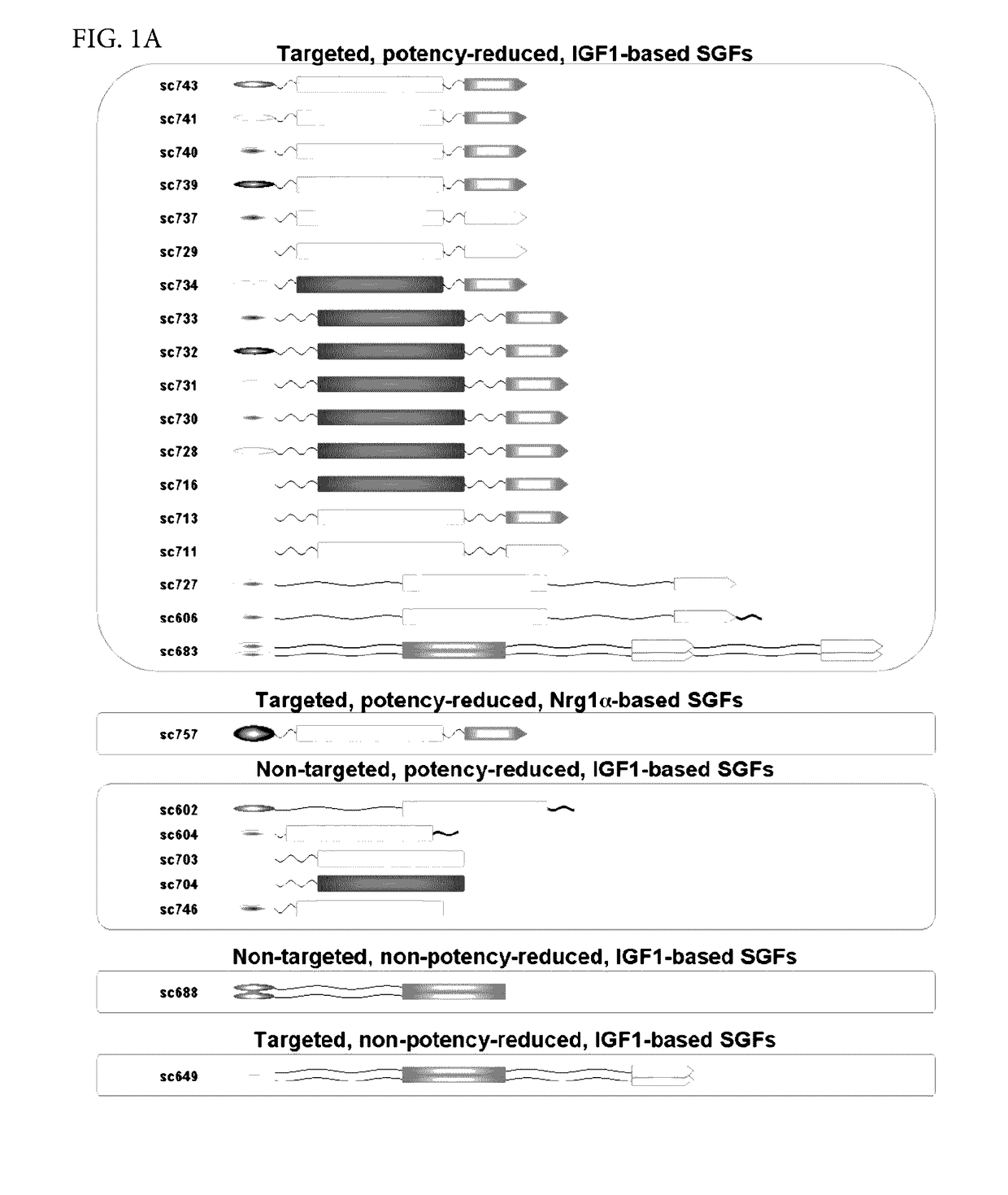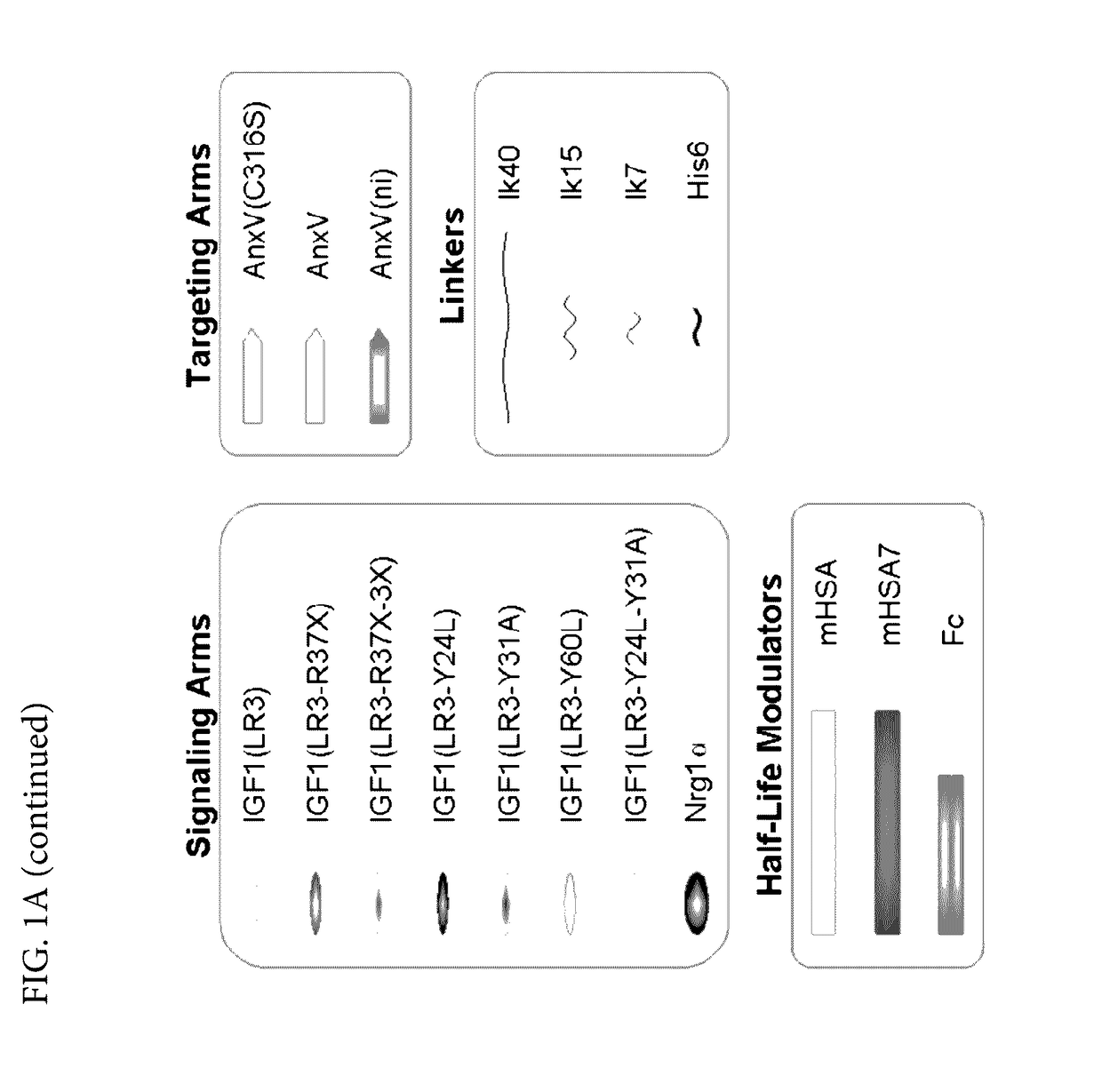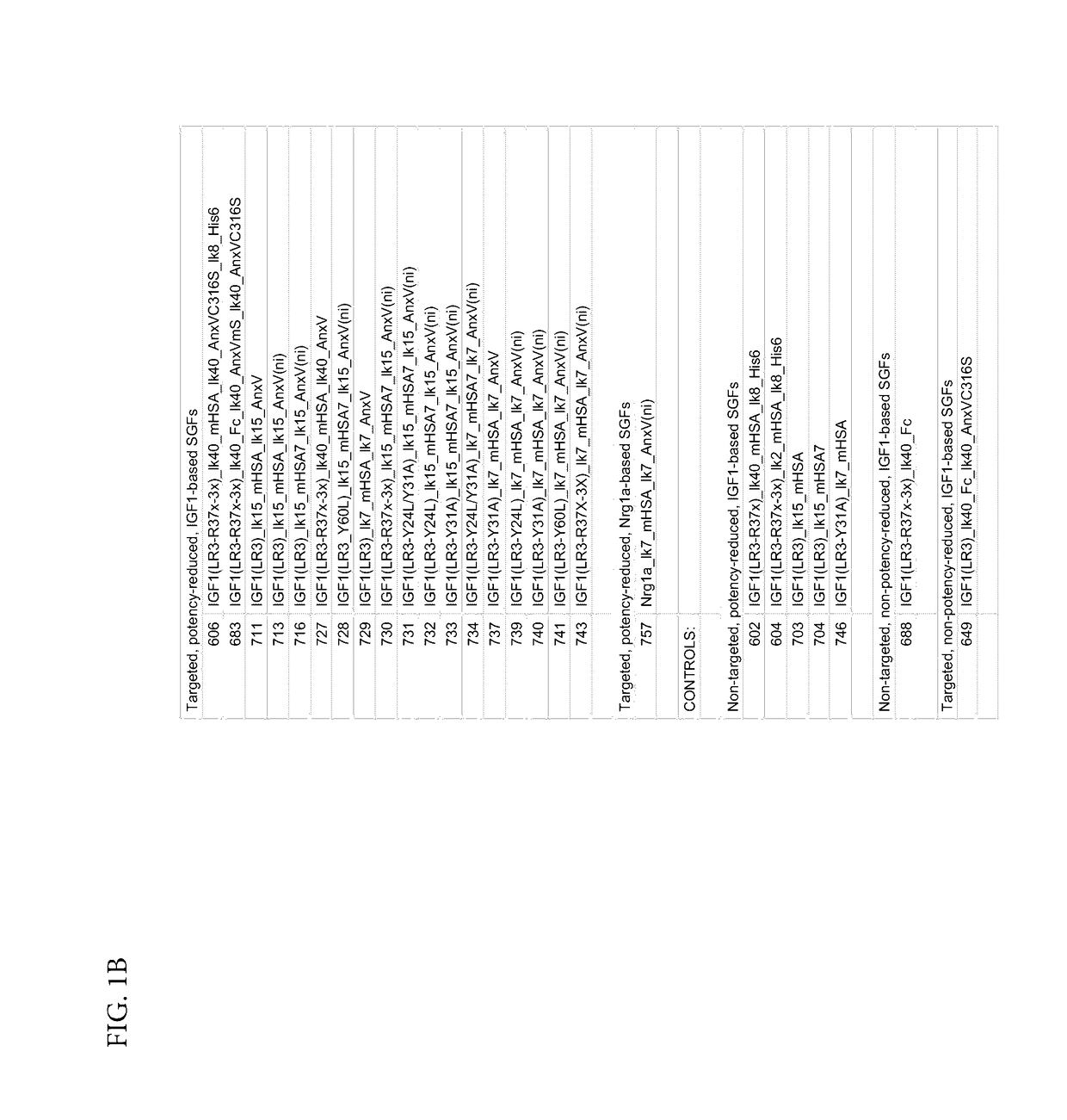Bi-Specific Therapeutic Proteins for Tissue Repair
- Summary
- Abstract
- Description
- Claims
- Application Information
AI Technical Summary
Benefits of technology
Problems solved by technology
Method used
Image
Examples
example 1
ic Fusion Proteins can be Engineered to have Reduced Potency on Healthy Cells
[0485]In order to enable targeting / selectivity for damaged cells, IGF1 was engineered to have reduced potency on healthy cells as compared to wt IGF-1 (FIGS. 2A-2B). Potency is defined as the concentration needed to achieve the half maximal level of pAKT signaling (pAKT EC50). In some embodiments, the IGF1 engineered variants were engineered using the IGF-1 (LR3) variant which contains a 13 amino acid N-terminal extension and a substitution of Arginine for Glutamate at position 3. The Arginine for Glutamate substitution was added to prevent binding of the fusion protein comprising the IGF-1 variant to IGF binding proteins (IGFBPs) and does not significantly affect potency (see FIGS. 2A-2B, EC50 of wt IGF1 is 1.22±0.74 vs. EC50 of IGF-1 (LR3) is 0.73±0.35).
[0486]A potency reduction of 6 fold or more was achieved by:[0487]1. Substituting amino acids. In some embodiments, the tyrosine residues can be substitut...
example 2
Potency Reduced Bi-Specific Fusion Proteins Selectively Signal (i.e, Exhibit a Potency Shift) in Cells Containing Target Molecule Compared to Cells without Target Molecule
[0498]The ability of phosphatidylserine (PS)-targeted, potency-reduced bi-specific proteins to selectively signal on cells containing the target molecule PS was measured in healthy (which does not display PS at the cell surface) vs. damaged (which displays PS at the cell surface) pluripotent stem cell derived cardiomyocytes (Cellular Dynamics International) and signaling was quantified by accumulation of phosphorylated AKT (FIGS. 3A, 3B and 3C).
[0499]Phosphatidylserine (PS)-targeted, potency-reduced bi-specific proteins (having a 6-fold or greater potency reduction compared to wt IGF-1, (e.g. SGFs 743, 741, 740, 739, 733, 732, 731, 730, 729, 728, 727, 716, 713, 711, 606, SEQ ID NOs: 86, 85, 84, 83, 82, 81, 80, 79, 78, 77, 76, 75, 74, 73, and 70, respectively) were compared against non-targeted potency reduced fusio...
example 3
of Hypoxia-Induced Apoptosis in Human Cardiomyocytes In Vitro Using Bi-Specific Proteins
[0511]FIG. 4 shows the reduction of apoptosis using fusions protein SGF 740 in an in vitro human cardiomyocyte hypoxia-induced apoptosis assay.
[0512]The bi-specific protein SGF 740 (SEQ ID NO: 84) comprising from the N terminus to the C-terminus: a variant of IGF-1 (LR3, Y31A), a 7 amino acid linker lk7, a variant of HSA (mHSA: C58S, K420E, and N527Q), a 7 amino acid linker lk7, and a non-internalizing variant of annexin A5 (ni-AnxV: R63A, K40A, K101A, E138A, D139G, N160A) was used in vitro to assess its efficacy. Apoptosis was induced by culturing cells at 1% oxygen for 48 hours. Fusion protein SGF 740 was added at the start of the hypoxia period. Caspase activity was measured. Caspases are a family of aspartate-specific, cysteine proteases that serve as the primary mediators of apoptosis. Apoptotic caspases are activated upon the receipt of either an extrinsic or an intrinsic death signal.
[0513...
PUM
| Property | Measurement | Unit |
|---|---|---|
| Angle | aaaaa | aaaaa |
| Ratio | aaaaa | aaaaa |
Abstract
Description
Claims
Application Information
 Login to View More
Login to View More - R&D
- Intellectual Property
- Life Sciences
- Materials
- Tech Scout
- Unparalleled Data Quality
- Higher Quality Content
- 60% Fewer Hallucinations
Browse by: Latest US Patents, China's latest patents, Technical Efficacy Thesaurus, Application Domain, Technology Topic, Popular Technical Reports.
© 2025 PatSnap. All rights reserved.Legal|Privacy policy|Modern Slavery Act Transparency Statement|Sitemap|About US| Contact US: help@patsnap.com



